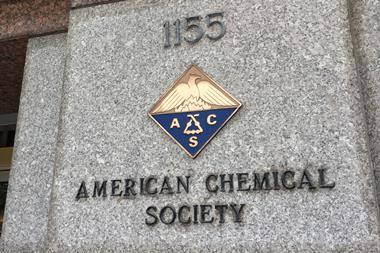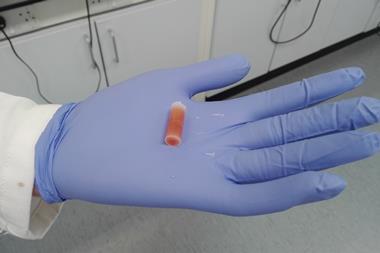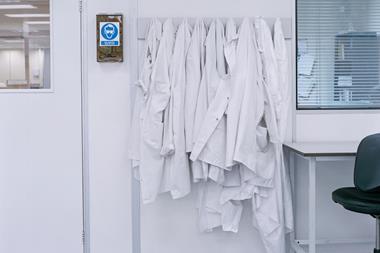
This year marks a decade since Sheri Sangji, a young research assistant at the University of California, Los Angeles (UCLA), died from burns received while carrying out a lab experiment. While this watershed moment has changed lab safety across the US for the better it is clear that there is still more work to do.
Twenty-three-year-old Sangji was preparing a compound that involved using the pyrophoric compound t-butyl lithium. She was scaling-up a reaction so needed to use a relatively large amount of this reagent. When she began drawing the liquid into the syringe, the plunger came out, soaking her in the liquid, which then ignited. A postdoc who was also working in the lab tried to wrap a lab coat around Sangji – who was not wearing a lab coat – to extinguish the fire, but that ignited too. She sustained third degree burns over nearly half of her body, and died 18 days later in the hospital.
To honour the 10-year anniversary of this infamous accident, the American Chemical Society (ACS) convened a special session at its annual spring conference in Orlando, Florida on 1 April. At the event, Craig Merlic, director of UCLA’s Center for Laboratory Safety that the university established in the wake to Sangji’s death, underscored that the horrific incident has helped improve lab safety at UCLA and research universities nationwide, as well as at US federal agencies and professional societies like the ACS.
Gaps remain
However, Merlic made it clear that significant gaps remain even at UCLA, which faced criminal charges along with Sangji’s principal investigator Patrick Harran. Merlic pointed to an incident at the university that occurred about a year-and-a-half ago.
In September 2017, a UCLA student was synthesising nanoparticles in a solvent using an oil bath. ‘Everything was looking good and then the student left the lab, went to the office, and was writing in his chemical notebook, took off his lab coat,’ Merlic recalled. When he went to leave the lab for lunch he noticed that the oil bath was smoking under the fume hood. It turned out that the hotplate had failed and overheated.
The student panicked, opened the fume hood sash and the material detonated – sending shards of glass and hot oil into his abdomen, Merlic recounted. As he had taken off his lab coat, the student sustained major injuries and was hospitalised for a week.
To help avoid accidents like this, Merlic’s centre has created a safety culture survey to help examine safety practices at four US research institutions, including UCLA. The survey comprised 38 questions, and considered the responses of principal investigators (PIs) and students separately.
Talking safety
‘We have had over 1000 respondents, and so we are pretty confident of our statistical analysis,’ Merlic said. Of the 469 UCLA researchers who participated in the survey, 95% of the PIs reported speaking openly with their university’s environment, health and safety staff about safety issues, and 97% said they would take immediate action if they saw a researcher in their lab act unsafely.
However, the survey data indicate some significant problem areas. 51% of trainees and staff do not consistently wear eye and or face protection when required. In addition, 61% of lab groups do not have regular lab safety discussions, and 70% of lab-related accidents or near misses are not regularly discussed.
Also concerning is the fact that about 51% of the PI respondents said they would not speak openly with their department chair about safety issues involving one of their colleagues. ‘I view that as a problem,’ Merlic told the ACS audience.
A trend also emerged that PIs believed they were communicating lab safety well, while their students were less sure. One example of this was a question asking whether the PI does a good job addressing safety issues in their lab: 100% of the PIs said yes compared with 81% of the students. Asked whether the PI positively acknowledges trainees and staff for safe behaviour, there was a gulf of almost 20 percentage points between the responses of PIs and students – 94% versus 77%.
Further data from the full survey cohort of 1034 researchers suggests that if the PI takes safety seriously then their students do too. 88% of students whose PIs recognise safety as a key issue incorporated safety measures into their work, but for PIs less concerned with safety only 36% did. ‘This is a terrible thing,’ Merlic said. ‘It tells you about the importance of PI engagement.’
Changing the culture
In addition, regular and frequent lab safety meetings mean accidents and near misses are more likely to be reported. ‘It is critical that we talk about minor injuries and near-misses because they are precursors to major injuries,’ Merlic remarked.
‘There has been huge progress in changing safety practices at UCLA – we have a low incidence of accidents, but they are still occurring,’ he told the ACS audience. ‘Many measures of safety culture are positive, however, PIs need to be more engaged in the importance of lab safety.’
The ACS, which has previously called for an overhaul of lab safety in universities, dedicated a presentation during the intermission of the session to Sangji. The organisation discussed insurance products offered to members to provide them with protection in the event that they incur some liability related to a lab accident.
‘Yes, we can develop the safety culture and we can enhance the safety culture, but we can’t guarantee that an accident will never happen,’ said John Adams, chairman of the ACS board of directors. ‘People may be working with materials that simply don’t have properties that are well understood and there may be surprises, you may be called into a situation where you are supervising people who you can’t watch every second, no matter how good the training is.’
These insurance plans are portable from job to job and offer coverage if there is a ‘negligence issue’, and they also cover bodily injury and property damage, among other things, according to Adams. These features are not typically found in the average employer’s insurance policy, he added.

















No comments yet